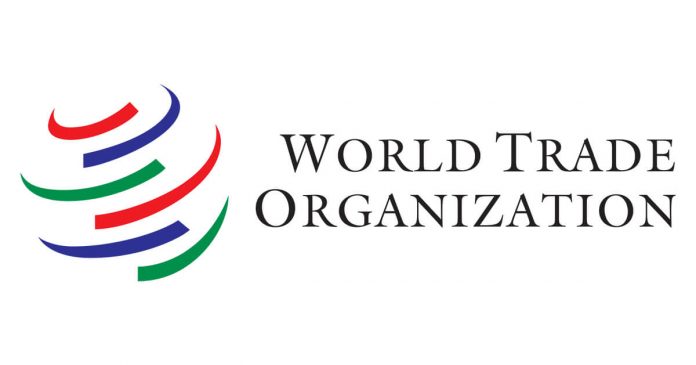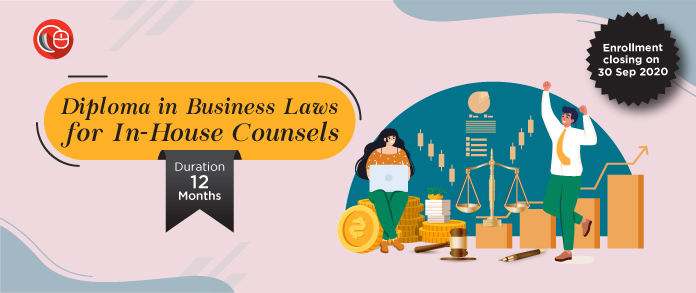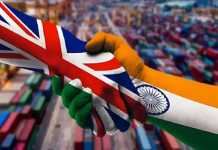This article is written by Pragya Agrahari of Amity Law School, Lucknow. This article provides a detailed analysis of the role played by the WTO in boosting international trade and its various key objectives, functions, and principles of trade on which international trade rests.
This article has been published by Sneha Mahawar.
Table of Contents
Introduction
We usually use goods and services imported from different countries, like wearing jeans from Italy, using mobile phones produced in the US but manufactured in China, riding in a bus designed in Germany, and many more. The question here is how these goods or services came to your city, how easy is it to transport one good from one nation to another, and on top of these, who supervises such activities and relations among various countries? The answer is that all these activities became possible because of international trade agreements among different countries, which like any other economic activity, is governed by a vast set of rules and regulations, which are further governed by international organisations.
With the coming of the era of globalisation and liberalisation, international trade between two countries became comparatively easier. The countries came closer by means of different economic deals and agreements between the countries and by reducing trade barriers. And these agreements and reductions in trade barriers were the outcomes of efforts made by the World Trade Organisation (WTO) through negotiations and various other methods. WTO is the world’s largest economic organisation with 164 members that represent 98% of global trade.
International trade and World Trade Organisation (WTO)
International trade refers to the sale and purchase of goods and services across international borders. This trade is carried out through a contract between two or more parties, which is regulated by the World Trade Organisation (WTO). The WTO is the only international organisation that regulates rules and regulations for trade carried out by different nations. The main purpose of the WTO is to ‘open trade for all’ so that every nation can benefit from it.
States generally, enjoy unfettered sovereignty over their internal affairs, which also includes trade. But in accordance with international customary law, states have to give up some percentage of their sovereignty so that an international community can be created in order to carry out business, trade, or other activities more easily. Lack of such compromise made international organisations futile.
Various nations exercise their supreme economic sovereignty while regulating the import and export of goods and services in and out of their territory. Some of them believe the use of foreign goods in their territory is an infringement of their territorial integrity or an incursion of their uniqueness. This results in various kinds of “trade barriers” between the countries, which consequently leads to difficulties in international trade. Moreover, it led to the unavailability and scarcity of certain commodities in the state markets. This necessitated the formation of international organisations in order to remove trade barriers and ease international trade. As a result, firstly, in 1947, the General Agreement on Trade and Tariffs (GATT) came into existence, and later it was replaced with the World Trade Organisation (WTO), which is playing a significant role in promoting international trade at present.
GATT and the formation of WTO : Brief history
The story of the establishment of GATT begins with the Bretton Woods Conference held in 1944 in the post-World war era. This conference originally named the United National Monetary and Financial Conference was a gathering of representatives from 44 countries that was held from July 1 to 22 in Bretton Woods, New Hampshire. The main objective of this conference was to set new rules for the regulation of the international monetary system and to build a new system of economic order to help countries overcome the losses incurred due to war and conflict. It led to the creation of two important institutions, namely the International Monetary Fund (IMF) and the International Bank for Reconstruction and Development (IBRD).
This conference also recommended the establishment of a third institution, the International Trade Organisation (ITO). The draft charter for ITO was also concluded at the 1948 United Nations Conference on Trade and Employment, also known as the Havana Charter. In this draft, various rules regarding trade, business, services, commodity agreements, investments, and employment practices were provided. But due to the failure of the US Senate to ratify this Charter, an ITO can never come into existence.
Meanwhile, in 1947, a group of 25 countries entered into an agreement that came to be known as the General Agreement on Trade and Tariffs (GATT), which came into force on January 1, 1948. GATT primarily aims to reduce tariffs on goods and remove the system of import quotas. Though GATT was not meant to remain on a permanent basis, it has completed approximately 50 years as a major multilateral agreement on trade, until the formation of WTO. GATT sponsored a total of eight rounds of multilateral trade negotiations for tariff reductions or other trade policies. The last of these rounds, that is, the Uruguay Round held from 1986-1994 and culminated in the Marrakesh Agreement establishing the WTO in 1995.
The WTO has incorporated major principles of the GATT, making it the most robust multilateral institution related to international trade. It has integrated GATT’s provisions in GATT 1994, which is an international treaty with respect to trade in goods only.
Uruguay Round
The Uruguay Round is known as the largest trade negotiation ever in history. Today’s WTO rules and agreements are largely the outcomes of Uruguay Round trade negotiations that were launched at Punta del Este, Uruguay, on 20th September 1986, and concluded at Marrakesh, Morocco, on 15th April 1994. It is one of the biggest reformations of the GATT rules and agreements since the GATT’s inception. A total of 125 countries have participated in this trade negotiation, which covered almost all subjects from industrial goods, electronics, textiles, agricultural goods, and services to intellectual property like copyrights, patents, and designs.
The most important contributions of the Uruguay Round to liberalising international trade are as follows:
- Major reductions in tariffs on industrial goods,
- Inclusion of services and intellectual property within the range of the multilateral trading system,
- Integrating trade in textiles and agricultural goods,
- Introduction of more effective means of dispute resolution,
- Strengthening international trade against unfair trade practices,
- Provides for greater transparency in procedures for import licensing for ensuring fairness,
- Introduction of a new Trade Policy Review Mechanism for comprehensive and periodic reviews of national trade policies of the GATT member countries,
- Successful negotiations between the US and the EU on agriculture in a deal called the ‘Blair House Accord’.
As a result of these negotiations, the WTO replaced the GATT, but its updated version still exists, famously known as the GATT of 1994.
Key objectives of WTO
The WTO was established to fulfil key objectives with respect to international trade and other economic activities, including:
The welfare of the people
The main objective of the WTO is to improve the lives of people by raising their living standards, creating jobs, raising their incomes, or expanding the trade of goods and services globally. It helps developing or under-developed countries enhance their trade capacity so that they can achieve economic growth and stability.
Negotiating trade rules
WTO strives to remove trade barriers or any other obstacles from the way of the progressive international trading system. These negotiations help the countries open their markets for trade. But at the same time, some trade barriers were maintained in order to protect the interests of consumers or the environment, etc.
Supervising WTO agreements
WTO agreements provide the rules for conducting international trade and commerce. It binds the signatory countries to limit their trade policies in accordance with these agreement provisions. These agreements strive to protect and help producers of goods and services, importers or exporters in conducting their businesses, and others involved in these trading activities.
Ensuring open trade
The main objective behind the emergence of the WTO is to maintain the free flow of trade as much as possible without any undesirable consequences like unfair competition, hegemony in a certain variety of goods or services, biassed trade policies, etc. WTO helps the inclusion of developing countries in the international trading system and helps them to achieve economic growth and ensure full employment. It oversees the trade rules and policies governing international trade and ensures that they are transparent and easily predictable.
Dispute settlement
In conducting international trade, several trade disputes also arise due to the conflicting interests of one nation and those of another nation. These disputes have been settled or negotiated by the WTO, which also involves the interpretation of WTO agreements. The WTO, as a neutral body, settles these disputes in accordance with the Dispute Settlement process provided in WTO agreements.
Key functions of the WTO
Implementation of the WTO agreements
WTO ensures that governments of every member country make their trade policies in accordance with the WTO agreements. WTO councils and committees ensure that WTO agreements are properly implemented and all other requirements have been satisfied. To monitor the status of such implementation, all members have to undergo a periodic review of their trade policies.
Trade negotiations
This is one of the most important functions of the WTO. WTO agreements include goods, services, and intellectual property. These agreements are not fixed, they may be negotiated according to the situation of one or more countries and their commitments to open trade markets. The WTO provides exceptions to various principles of trade enshrined in WTO agreements. New rules or agreements are also added from time to time.
Settling of disputes
Settling disputes arising between countries or with respect to trade is essential for the system of international trade to run smoothly. The process for settling such disputes is provided in WTO agreements. So, if any country thinks that its rights under any agreement have been infringed, it can bring such disputes to the WTO. The WTO appoints independent experts to resolve its disputes based on the interpretation of provisions of the WTO agreements and other relevant factors.
Help countries build trade capacity
The WTO empowers developing countries to boost their trading capacity and help them develop the skills and infrastructure required to expand their trade. It conducts various missions or courses, especially focused on developing countries. Even in WTO agreements, special provisions were provided for developing countries.
Enhancing cooperation between states and non-state actors
WTO remains in constant touch with various non-governmental organisations (NGOs), media, parliamentary members, other international organisations, and the general public in order to get their opinions on various aspects of WTO and ongoing negotiations and maintain their cooperation in the international trading system.
Conducting economic research
The WTO conducts research in the field of trade and other economic activities and also collects and disseminates various data and information in support of its activities.
Important principles of WTO with respect to the trading system
No discrimination in trade
According to the WTO agreements, countries cannot discriminate between two countries as trading partners. They cannot grant some countries special favours in trade by lowering rates of customs duty or taxes, etc. Every WTO member should be treated likewise. This principle is known as Most-Favoured Nation (MFN) treatment. It means that if one nation lowers its trade barriers or opens its market, it has to do the same for all other countries, which are its trading partners. However, there are some exceptions to this general principle that are allowed. For example, a government can set up a free trade agreement for certain goods to be traded with certain countries.
Free trade
The WTO conducts its activities on the principle of “free trade” or “progressive liberalisation”. It encourages nations to open their markets, lower their trade barriers, or restrict customs duties, import bans, or quotas. Since its inception, it has continuously worked on this principle through various rounds of negotiations and agreements, persuading countries by highlighting the benefits of opening markets for international trade.
Transparency in the trading system
It is the duty of the WTO to ensure that the trade policies and rules of each member country are transparent and easily predictable. These policies should not be subject to too many recurring changes, they should be stable enough to avoid any inconsistencies in their understanding by other countries. By discouraging quotas or import limits, which can lead to red-tapism or unfair play, one can maintain stability or predictability.
Fair competition
The WTO is dedicated to establishing open and fair competition in the international trading system. As it is based on the principle of non-discrimination in trade, it is successfully establishing secure conditions for fair and undistorted competition.
Economic development and reform
WTO helps in the development of nations. It has provided special provisions for developing nations, allowing them certain trade concessions. Certain agreements by the WTO provide developing countries with a ‘period of transition’ so that they may easily adjust to new situations.
Building trade capacity of developing countries by the WTO
The WTO plays an important role in uplifting developing countries, which make up three-fourths of its total membership. Through various assistance programmes or partnerships, the WTO tries to increase the capability of developing nations to carry out trade and business so that they can present themselves in the global market. Various training courses and programmes were conducted jointly with other international organisations, in order to build their trade capacities. This guidance is provided on any subject, whether related to participation in the WTO, help in negotiations, implementation of its commitments, etc. The least developed countries among them were getting special attention and help with trade/ tariff data related to their export interests and participation in the WTO.
Committee on Trade and Development (CTD)
It is the main body in the WTO responsible for the coordination of work on development. It works on a variety of issues related to trade in developing countries, like the implementation of WTO agreements, technical assistance, and increased participation. It approves, monitors, and provides guidance for technical assistance programmes conducted by the WTO. The Doha Declaration mandates it to review all special and differential provisions for developing countries in order to strengthen them and make them more suitable and effective for them.
Aid for Trade initiative
The Aid for Trade initiative was launched by the WTO in December 2005 at the Sixth WTO Ministerial Conference held in Hong Kong, China. It works on the basis of a biennial work programme. It was designed to help developing nations build trade capacity by opening opportunities for them to enhance their infrastructure and improve their ability to earn benefits. The theme for the 2020-2022 Aid for Trade Work Programme is “Empowering Connected, Sustainable Trade.” This work programme is dedicated to carrying out an analysis of the opportunities offered by digital connectivity and sustainability. More than 400 billion dollars has been disbursed until now for supporting the Aid for Trade projects.
Enhanced Integrated Framework (EIF)
The Enhanced Integrated Framework is the main mechanism through which less developed economies can access Aid for Trade projects. It bridges the gap between demand and supply for the Aid for Trade programmes and mainstreams them into their national development plans. It provides a way for the least developed countries (LDCs) to set their priorities regarding trade-related assistance and capacity building and to channel their demands through the Aid for Trade process through the EIF process for accessing resources. The EIF Trust Fund provides funding to LDCs and enables them to take advantage of the benefits of Aid for Trade.
Standards and Trade Development Facility(STDF)
The Standards and Trade Development Facility (STDF) is the joint brainchild of the heads of FAO, OIE, WHO, the World Bank, and the WTO and was launched at the Doha Ministerial Conference in November 2001. It plays a key role in helping developing economies meet international standards for food security, animal and plant health, and other trade requirements on the way to accessing global markets. It complements the Aid for Trade initiative through other projects and monitoring of aid flows. The STDF Trust Fund, supervised by the STDF Secretariat and totaling over 50 million dollars, has been supporting many projects in Africa, Asia-Pacific, Latin America, etc.
Assistance and training
The WTO ensures that each country is able to take full advantage of the multilateral trading system and, therefore, organises many technical assistance programmes throughout the year. Under the WTO Secretariat, these assistance programmes are coordinated by the Institute for Training and Technical Cooperation (ITTC) on the basis of training and assistance plans. The Committee on Trade and Development supervises all these activities. These training and technical assistance courses were made in accordance with each country’s specific needs and requirements.
WTO’s dispute settlement mechanism
The dispute settlement mechanism provided by the WTO is very essential for the smooth functioning of the multilateral trading system and the effectiveness of its rules and agreements. It contributes to maintaining stability in the global economy.
Any dispute brought to the WTO has to go through various stages of dispute resolution. There are two ways of dispute resolution:
- Mutual agreement,
- Adjudication
Stages of dispute settlement
Consultation
Before bringing the dispute to the authorities, both parties try to resolve it through consultation. If it fails to bear fruitful results in the desired period, parties may request adjudication by panels.
Adjudication by panels
Parties may request the establishment of panels in writing to the Dispute Settlement Body (DSB). This request must contain details like whether consultations were held, a summary of the complaint and its legal basis, etc. The panellist is a third party who is selected by the WTO Secretariat. After the selection of a panellist, they have one week to set the timetable for the whole process. Each party to the dispute makes submissions, presents their cases, and makes rebuttals before the panel. The panel then reaches a solution to the dispute after examination of each and every aspect of the dispute and submissions and sends its report to the Dispute Settlement Body. If no solution can be found, they send a report containing the findings of the case and their recommendations.
This report can only become binding when the Dispute Settlement Body adopts it. In case the party has opted to appeal, the panel report will be considered for adoption only after the completion of the appeal. If no appeal is filed, the DSB may adopt the panel report, unless there is a negative consensus in the DSB against the adoption.
Implementation of ruling
Once there is the adoption of the panel report, DSB addresses some recommendations and ruling for the party who has lost the case, so that it can bring itself into compliance with the WTO ruling or find satisfactory adjustments. This compliance is necessary for the effective settlement of disputes. DSB is responsible for the implementation of the panel or Appellate reports. The party has been provided with a reasonable period of time to get into compliance with the ruling.
WTO and the Sustainable Development Goals (SDGs)
In addition to strengthening and liberalising international trade, the WTO also plays a significant role in the achievement of the UN’s Agenda for Sustainable Development Goals (SDGs) by 2030 in the areas related to poverty alleviation, food security, health, education, the environment, etc. The SDGs recognise the contribution of trade and the WTO in achieving these goals, as the WTO, by implementing certain trade reforms and agreements, is helping the countries achieve economic growth and development, which are part of the SDGs. The WTO is monitored on an annual basis by the UN’s High-Level Political Forum (HLPF) on its efforts to achieve SDGs related to trade.
SDG1: No poverty
Opening markets and trade can grow more opportunities for low-income countries and can uplift their living standards through increased competition, better prices of goods and services, and more choices for consumers.
SDG2: Zero hunger
The WTO also plays an important role in achieving food security through its reformed trade policies for agricultural goods. By eliminating subsidies on agricultural produce, fairer prices in competitive markets can be ensured.
SDG3: Good health and well-being
WTO also plays a significant role in ensuring affordable medicines to all countries, especially the least developed nations.
SDG8: Decent work and economic growth
By increasing trade capacities and creating various economic opportunities for the countries that were less developed, it ensures good economic growth and a decent work environment for them.
SDG9: Reduced inequalities
WTO seeks to bridge the gap between developing and developed nations through various initiatives based on the principle of “Special and Differential Treatment for Developing Countries,” which especially focuses on developing nations taking into account their capacity constraints.
Analysis of the role of WTO in international trade
WTO plays a very indispensable role in promoting, regulating or supervising international trade. Its very purpose, since its inception, has been to encourage progressive liberalisation in trade by removing different kinds of trade barriers and opening up the markets, which is crucial for overall economic development and well-being. Its main function is the negotiation of trade rules or agreements, which provides the countries with an opportunity to show their commitment to liberalising international trade. WTO’s trading principles, like transparency in trade rules, non-discrimination, etc., further provide it with a robust structure to fulfil its commitments to promoting international trade. It created an opportunity for even developing countries to make their markets accessible to other countries and achieve economic growth and development. The WTO has been successful in establishing many trade agreements that liberalise trade between countries. Moreover, its Dispute Settlement Body has proven effective in many trade-related disputes.
Challenges of the WTO
Despite getting many successes in steps to liberalising trade and its immense contribution to boosting international trade, it is continuously losing before its contemporary challenges.
Some of its recent challenges are as follows:
- A long period of time taken to conclude negotiations,
- Disputes between the interests of developing and developed countries in trade,
- Dominance in trade by developed nations,
- Disputes related to the ‘developing’ status of certain countries and their eligibility to receive special treatment.
- Balkanisation (division into smaller, ethnically homogenous units) of trade blocs within the WTO, that is a regional alliance of some members of WTO to exert their influence within the organisation.
Conclusion
The WTO is one of the three major international organisations (the others being the International Monetary Fund and the World Bank) on which the world’s economic system rests. It has emerged as the most powerful institution for opening new markets for trade and reducing trade barriers for the promotion of international trade. Its role, whether in the settlement of disputes, uplifting developing nations, carrying out negotiations, or building cooperation with other organisations, has been very crucial for the working of the global trading system. Although there are many challenges ahead, the WTO has been continuously working toward their resolution. Now the time has come when the WTO should focus more on ‘fair trade’ instead of ‘free trade’ and create more opportunities for developing nations so that they can come up to par with developed nations. Only then these challenges will be overcome.
Frequently Asked Questions
Why was GATT replaced with WTO?
GATT was replaced with WTO due to many reasons, which are as follows:
- GATT was only a multilateral agreement consisting of a set of rules and regulations. The institutional structure was missing.
- GATT does not deal with trade in services and intellectual property rights (IPR).
- GATT does not have a robust Dispute Settlement mechanism.
- GATT was less representative in nature as it had no members from newly independent countries or other socialist nations. Hence, it was sometimes seen as promoting the interests of the West.
- It has failed to curb several restrictions on trade.
What are the main organs of the WTO?
The main organs of the WTO are as follows:
- Ministerial Conference (top-most decision-making body),
- General Council consisting of Goods Council, Services Council and TRIPS Council,
- Trade Policy Review Body (to take reviews of trade policies),
- Dispute Settlement Body (to settle trade disputes),
- Appellate Body (to hear appeals against panel reports).
What is Doha Development Agenda (DDA) in WTO?
Doha Round is the latest trade negotiation in the WTO. Its purpose is to reform the international trading system by lowering trade barriers and revising certain trade rules. It is also called the Doha Development Agenda, as its fundamental objective is to improve conditions of trade for developing nations. This round was launched in November 2001 in Doha, Qatar. The Doha Ministerial Declaration clarifies that the interests and needs of developing nations form the heart of this Declaration, and they will ensure that even the least developed nation gets a share of the overall growth of world trade. But it failed due to many systemic problems.
References
- https://www.ajol.info/index.php/naujilj/article/view/195180/184364
- https://www.wto.org/english/thewto_e/whatis_e/inbrief_e/inbr_e.htm#:~:text=In%20brief%2C%20the%20World%20Trade,predictably%20and%20freely%20as%20possible
- https://www.drbrambedkarcollege.ac.in/sites/default/files/Globalization%20and%20WTO.pdf
- https://blog.ipleaders.in/international-trade-law/#World_Trade_Organization_WTO
Students of Lawsikho courses regularly produce writing assignments and work on practical exercises as a part of their coursework and develop themselves in real-life practical skills.
LawSikho has created a telegram group for exchanging legal knowledge, referrals, and various opportunities. You can click on this link and join:
Follow us on Instagram and subscribe to our YouTube channel for more amazing legal content.
 Serato DJ Crack 2025Serato DJ PRO Crack
Serato DJ Crack 2025Serato DJ PRO Crack















 Allow notifications
Allow notifications



